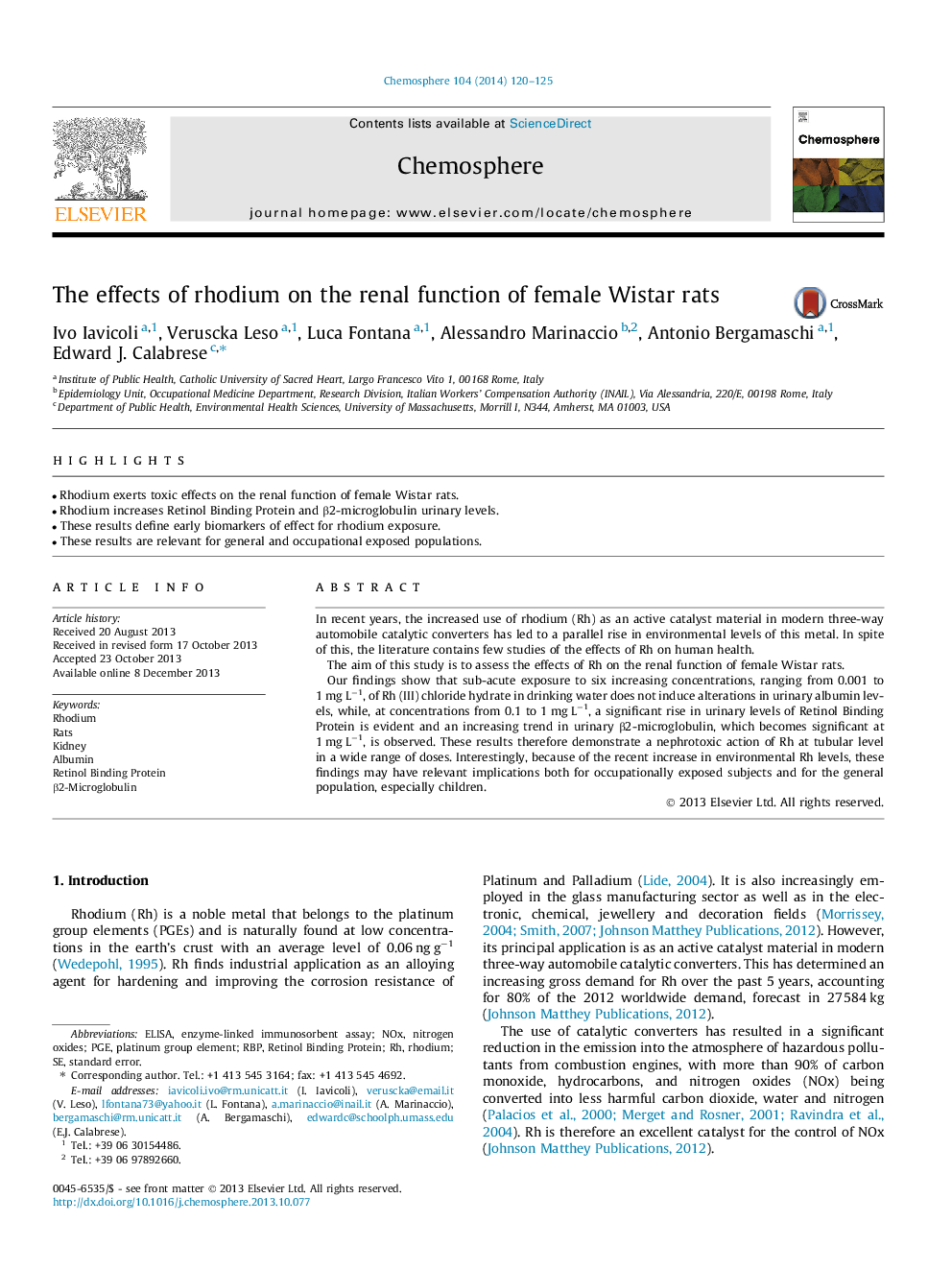| Article ID | Journal | Published Year | Pages | File Type |
|---|---|---|---|---|
| 4408830 | Chemosphere | 2014 | 6 Pages |
•Rhodium exerts toxic effects on the renal function of female Wistar rats.•Rhodium increases Retinol Binding Protein and β2-microglobulin urinary levels.•These results define early biomarkers of effect for rhodium exposure.•These results are relevant for general and occupational exposed populations.
In recent years, the increased use of rhodium (Rh) as an active catalyst material in modern three-way automobile catalytic converters has led to a parallel rise in environmental levels of this metal. In spite of this, the literature contains few studies of the effects of Rh on human health.The aim of this study is to assess the effects of Rh on the renal function of female Wistar rats.Our findings show that sub-acute exposure to six increasing concentrations, ranging from 0.001 to 1 mg L−1, of Rh (III) chloride hydrate in drinking water does not induce alterations in urinary albumin levels, while, at concentrations from 0.1 to 1 mg L−1, a significant rise in urinary levels of Retinol Binding Protein is evident and an increasing trend in urinary β2-microglobulin, which becomes significant at 1 mg L−1, is observed. These results therefore demonstrate a nephrotoxic action of Rh at tubular level in a wide range of doses. Interestingly, because of the recent increase in environmental Rh levels, these findings may have relevant implications both for occupationally exposed subjects and for the general population, especially children.
